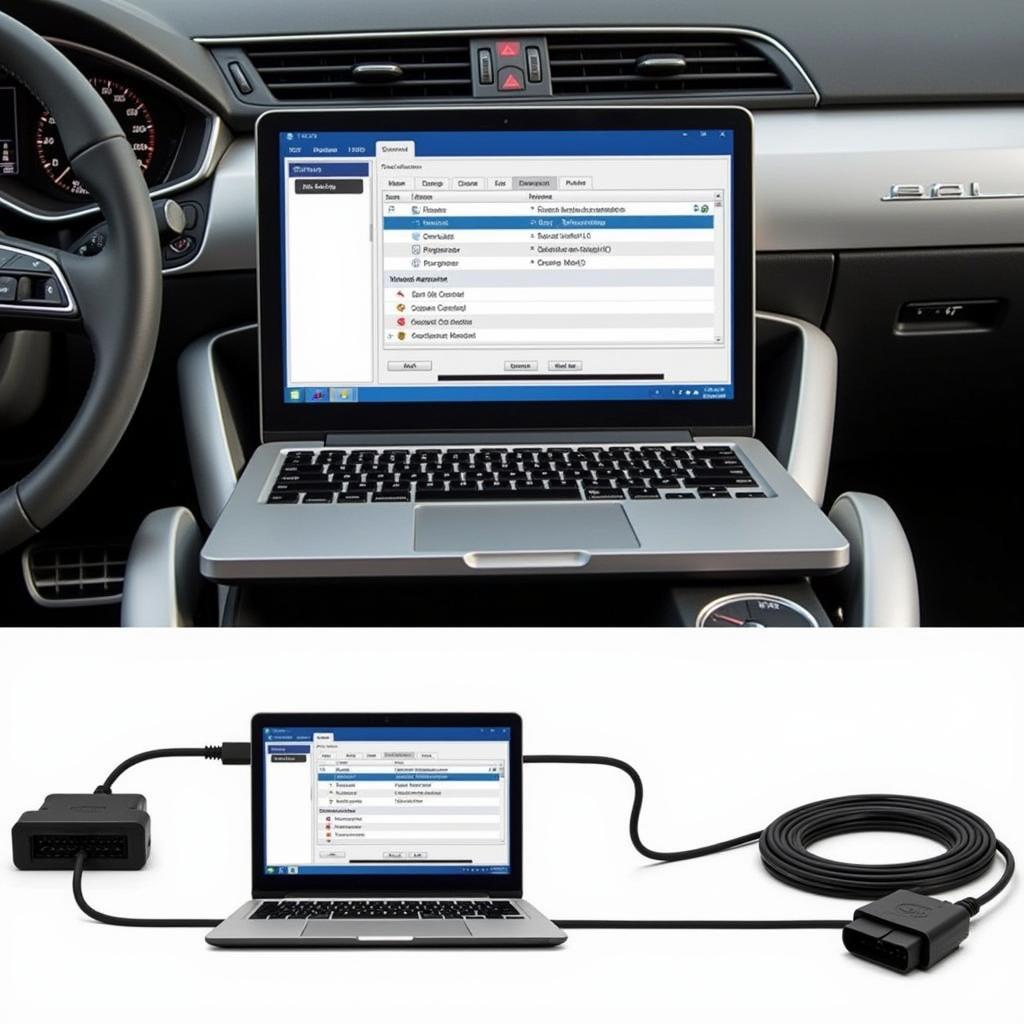Torsion value, often encountered alongside VCDS (Vag-Com Diagnostic System), is a crucial parameter in modern diesel engines, particularly those equipped with Pumpe Duse (PD) injection systems. This article delves deep into the world of torsion values, explaining what they represent, why they matter, and how VCDS comes into play.
What is Torsion Value?
In simple terms, torsion value signifies the crankshaft’s twisting or rotational force. This value, measured in degrees, provides an indication of the timing interaction between the crankshaft and the camshaft, which is vital for the smooth operation of your engine. Specifically, it reflects the load placed on the timing belt or chain as it synchronizes these two critical components.
crankshaft-camshaft-timing|Crankshaft and Camshaft Timing Diagram|Diagram showing the timing relationship between a crankshaft and camshaft in an engine, highlighting the timing belt or chain connection.
The Role of VCDS in Torsion Value Analysis
VCDS, a powerful diagnostic software developed by Ross-Tech, serves as your window into your car’s engine control unit (ECU). With VCDS, you can access a plethora of data points, including the crucial torsion value.
“Think of VCDS as your car’s translator,” says Robert Thompson, an automotive engineer and author of “Modern Automotive Diagnostics.” “It allows you to understand what your car’s computer is trying to tell you.”
vcds-software-screenshot|VCDS Software Interface|Screenshot of the VCDS software interface displaying engine data, with the torsion value highlighted.
By monitoring the torsion value through VCDS, you can:
- Diagnose Timing Issues: Significant deviations from the specified range can indicate a stretched or worn timing belt/chain, potentially leading to catastrophic engine damage if left unchecked.
- Optimize Engine Performance: Fine-tuning the torsion value within the acceptable range can contribute to smoother running, improved fuel efficiency, and reduced emissions.
- Troubleshooting Engine Problems: Unusual fluctuations in the torsion value can be early warning signs of issues like worn engine mounts, failing dual-mass flywheels, or even injector problems.
How to Check Torsion Value Using VCDS
Checking your torsion value with VCDS is a relatively straightforward process. However, always exercise caution when working with your car’s ECU.
- Connect: Connect your VCDS interface to your car’s OBD-II port and your computer.
- Launch VCDS: Turn on the ignition and launch the VCDS software.
- Select Control Module: Select “Engine” from the list of available control modules.
- Access Measuring Blocks: Navigate to “Measuring Blocks” or “Measurement Values” depending on your VCDS version.
- Locate Torsion Value: Look for a group that displays “Torsion Value” or “Synchro Angle.” This might vary slightly depending on your car’s make and model.
- Interpret the Reading: Compare the displayed value to the manufacturer’s specified range found in your car’s service manual or online resources.
Note: For detailed instructions specific to your vehicle, always refer to your car’s service manual and the official VCDS documentation provided by Ross-Tech.


